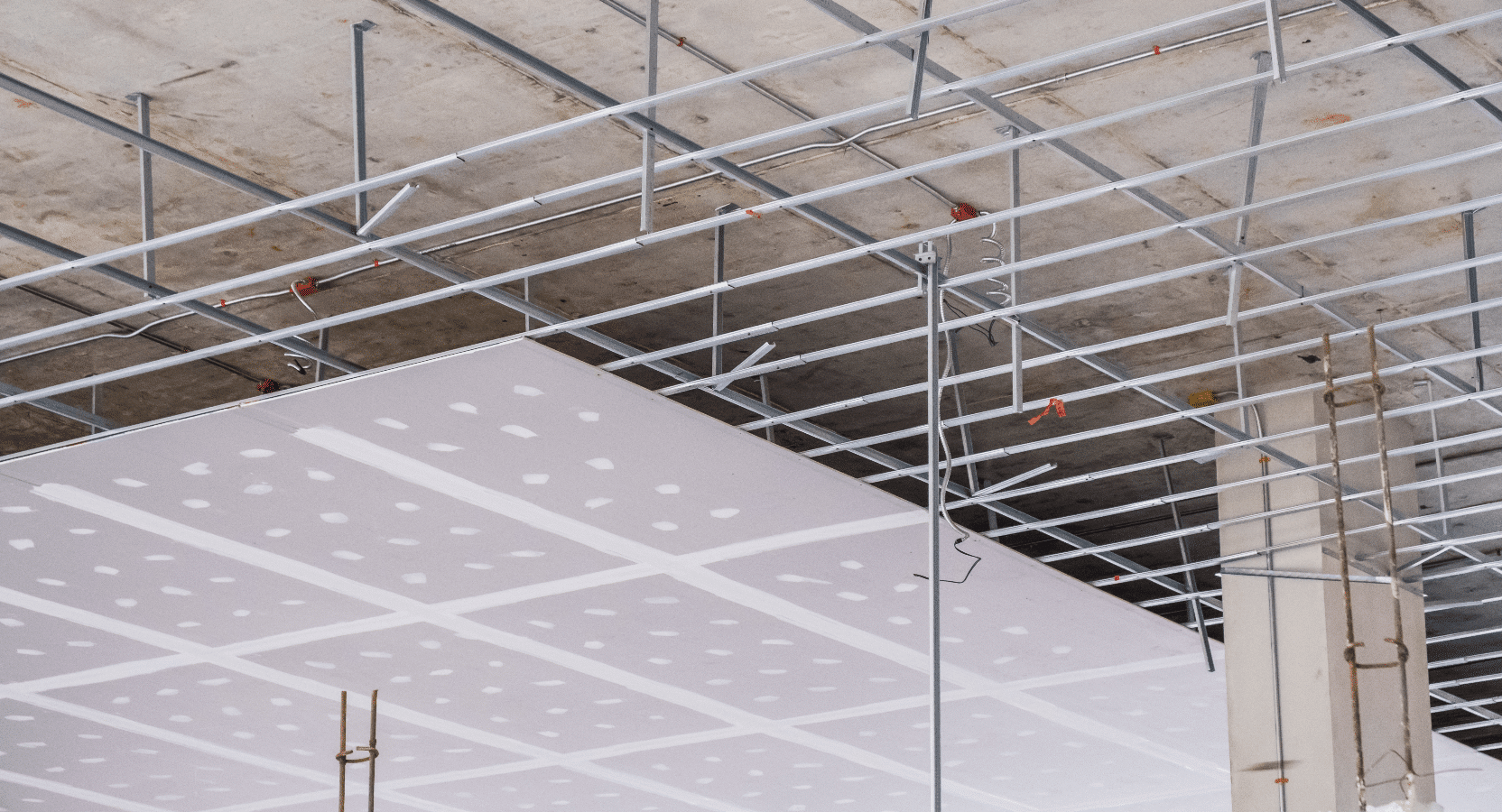Suspended Ceiling Grids: Everything You Need to Know
Suspended ceiling grids are the framework and structural support for a suspended ceiling. Suspended ceilings are commonly seen in offices and commercial buildings, typically fitted with tiles or panels and lighting. Suspended ceilings also hide a lot of unsightly electrical or pipe work.
What are Suspended Ceiling Grids?
Suspended ceiling grids are the frame for a suspended ceiling, they are a very important part of a suspended ceiling system as they do the suspending! As a result, they need to be quite strong. Also called drop ceilings, suspended ceiling systems slightly reduce ceiling heights, but provide an extra bit of floor place when lighting is installed - so the grid
What Types of Suspended Ceiling Grids Are Available?
There are three main types of ceiling grids:
- Clip-in: Clip-in ceiling grids have metal runners with small clips, which will hold onto the ceiling tiles. Each U-shaped clip supports the weight of the tiles evenly to the sides of the room.
- Hook on: A hook ceiling grid is good for hiding the actual grid system itself, as the ceiling tiles hang below the grid. Hook ceiling grids are good for metal ceiling tiles, as they create a very sleek and uniform appearance.
- Lay-in: You can easily lay in tiles and full panels with a lay-in suspended ceiling grid, which makes them useful when you need an easy-clean option or will require access frequently - as there are no fixings involved.

Ceiling tiles or ceiling panels are added to grid systems of all kinds. Within the broad types of ceiling grid systems there are a few sub-categories, these include the following types of grids:
- Black suspended ceiling grid: You can use black ceiling tiles with a black grid to create dark areas and detract from the suspended ceiling look. This is useful in areas like cinemas, bowling alleys and auditoriums or theatres, where darker environments are required in a commercial space.
- Metal suspended ceiling grid: When greater strength and support are required a metal suspended ceiling grid is ideal. Strong metal frames can be useful when there is considerable amounts of lighting to support the grid, or when the suspended ceiling is housing extensive wiring.
- Open grid suspended ceilings: You can have an open grid if you want, there’s no requirement for tiles or panels. Small amounts of wiring for lights can easily run along the grid without being very visible, and open grid suspended ceilings give the impression of higher ceiling heights.
- Aluminum suspended ceiling grid: Aluminum is a lightweight, low-cost material that is useful for grids that will not support much weight beyond the occasional light. Aluminium suspended ceiling grids are therefore excellent for big offices and any other large-scale installation.
- Chrome suspended ceiling grid: A polished or brushed chrome suspended ceiling grid will provide a very reflective frame, so they are a good choice where a lot of lights will fit in the grid. Commercial shopping malls often use chrome grids in their entrances and exits.
- Plastic suspended ceiling grid: Plastic grids are easy to maintain and replace, while also being capable of supporting moderate amounts of weight. Plastic ceiling systems can feature stylish and colourful designs as custom plastic grids, as well as tiles or panels, are very simple to produce.
These are the main types of suspended ceiling grids available, but there are some others including timber. Timber may be used for its acoustic properties, so is useful in large restaurants and other commercial spaces where sound-deadening properties are desirable.
What is the Average Cost of Suspended Ceiling Grids?
According to the independent trade site Checkatrade a suspended ceiling costs £22 to £35 per square meter. The cost will depend on a few factors including the following:
- Grid materials: Brushed or polished chrome suspended ceiling grids are naturally more expensive than plastic suspended ceiling grids, so you will find that the materials used in your grids are the most important factor.
- Grid size: Spreading expensive grid materials across a large space will push up costs further, you can economise by using a lower-cost material such as plastic in certain areas - such as a break room in an office.
- Grid tiles and panels: Some panels, such as moisture-resistant or acoustic panels, are more expensive than standard tiles.

Tips on How to Install Suspended Ceiling Grids
When installing a dropped ceiling it is important to measure and cut each part of the grid with good-quality tin snips. A helpful practice from professional ceiling installers is to use the best brands for ceiling tiles or ceiling panels.
The best brands include the following:
- AMF
- Armstrong
- British Gypsum
- Distributor
- Ecophon
- Rockfon
- SAS
- USG
As a suspended ceiling has many parts it is important not to skimp on quality, particularly when ceiling systems are covering many square feet. When installing a suspended ceiling grid you need to find a reputable supplier who will stock all the parts you need in one place and can provide quality products.
Are Suspended Ceilings Right For You?
If you need suspended ceiling tiles or any other type of building material we can help. We offer a resourceful team and an industry-leading level of care that you never get from other providers. You'll receive everything you need fast when you open a trade account.
Browse Our Range of Suspended Ceiling Grids
- Rockfon T24 Main Runner 3600mm - White (038/038/563)
2 - 3 WORKING DAY DELIVERY
- Exposed 24mm grid system
- A strong and stable grid
-
2 - 3 WORKING DAY DELIVERY
- Ideal for retail, offices and meeting rooms
- Finely textured surface
- MF5 Plasterboard Ceiling Section 3600mm x 25mm (027/165/001)
2 - 3 WORKING DAY DELIVERY
- Non-Flammable
- Goes under MF7












